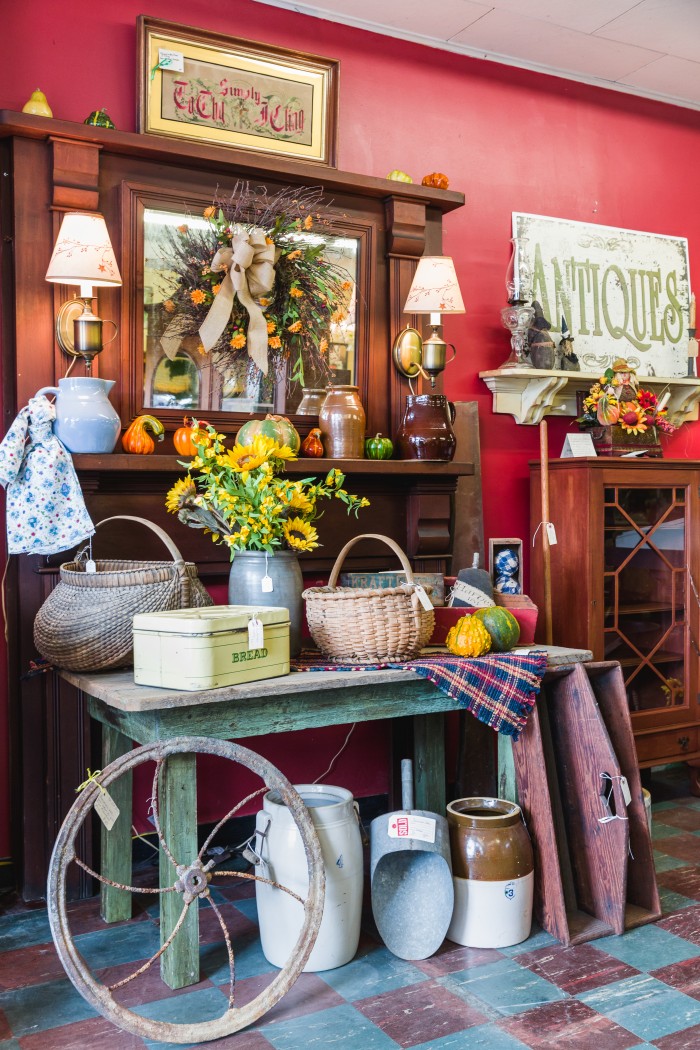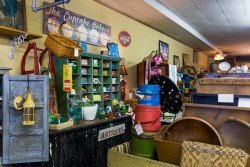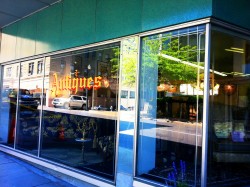Why do we love old “stuff” so much? Decoding the antique mystique
February 11, 2016 There’s just something so sentimental about the good ol’ days.
There’s just something so sentimental about the good ol’ days.
What draws us to these old items? They’re past their prime. Orphaned by their original owners. Some, entirely obsolete, and replaced with swifter, sleeker options or technology. And yet, there’s a certain charm to the old-time ways of living.
The mystique of the antique.
Maybe it’s the hunt. Who doesn’t love the sifting through a mismatched shop of odds and ends, looking for a gem? Not knowing what to expect just makes everything you do find feel like a special treat.
But what compels you to actually take that old cuckoo clock or chest-of-drawers home?
One big clue to the mystery of “antique appeal” is just what it is people seem to be searching for.
“We see things in this generation that we didn’t even sell 20 years ago,” said Mike Eades, owner at Four Seasons Antiques & Appraisals in Princeton. “They’re interested in items from the 70s and 80s, because they were exposed to it.”
He said a teenager came to the shop recently, and didn’t know what a slide rule was.
“When I was in college, that’s how we did calculus!” Mike said. “Logically, younger people are not interested in things they’ve never seen before. They want something they can remember from their childhood. I constantly hear people say ‘I remember grandma had one’ or ‘I used to have this when I was a kid.’ Sometimes you see their eyes light up. It’s a preservation of the history itself.”
The antique trends are ever-changing, and Vicki Wilson of Brick House Antiques in Lewisburg is on top of them, too.
So what childhood nostalgia are people drumming up in the antique shops these days?
“Right now in the antique business, advertising is the hot item,” Vicki said. “We look for nationally known brands.”
She just scored a collection of 70-some political war bond & WWII posters from a man whose father owned factory. He was sent the posters to hang for his workers.
“Because I have done that work myself, I know how much time and energy is put into it. I’m all about it not being thrown into a dump.”
“He kept them beautifully,” Vicki said. “The colors are vivid. The engraving is beautifully done. You can tell they’re originals. All originals have been folded, and most have holes from tacks.”
Funny, that in a world where we actively block ads, muting commercials and auto-closing pop-ups that are so desperately reaching out to us with pitches tailored just for us, we instead take interest instead in the messages meant for another place and another time.
Maybe it’s just shocking, how bluntly un-sly the Mad Men-era ads could be. One of Vicki’s personal favorites are the tablecloths from post-WWII: they were all brightly colored in an attempt to cheer folks up after the war.
Of course, like the other antique shoppers drawn to items from their past, she has a personal connection to linens. She took sewing classes in school, and had a “hope chest,” something foreign to today’s young ladies, but very special to her growing up.
“I’m 72,” she said. “I had a little box. When you’d get married, you already had a start for your new home.”
She said a lot of the old linens she gathers at the shop are marked with initials and dates. That’s because they were hand-spun by young women who were starting their own hope chests. They would sew up “samplers” to showcase their work, with a Bible verse or the alphabet. For “kitchen samplers” they would design homey, hearth-y phrases, like “Home is where the heart is.” The stitchings were proof of their skill— and a point of pride.
 “Because I have done that work myself, I know how much time and energy is put into it,” she said. “I’m all about it not being thrown into a dump.”
“Because I have done that work myself, I know how much time and energy is put into it,” she said. “I’m all about it not being thrown into a dump.”
Drawing from his own experiences from 26 years in medicine, Mike’s personal collection is a peek into the field’s past— especially its oddities.
“What really turned me onto it was bleeding instruments,” he said. “In the 70s, they thought that by draining blood, you would release toxins. I’m drawn to the barbaric nature of the instrument itself. Me being in medicine for so long, I know how useless an endeavor it was.”
For Art Riley, antique collecting is less about a particular spot in time, and more about timelessness. Among the 3 floors of old treasures at his Landmark Antique Mall in Bluefield, he sees a final holdout for a fading dedication to craftsmanship.
“I think our heritage, generally speaking, is disappearing into a disposable age,” he said. “If you buy a chair today, you expect it to last 4 or 5 years. These were meant to last.”
His shop has taken in antique furniture sets that have had the same owner since the 20s, still sleek like new.
Those old, old finds are his favorites. Many of the things in the shop are elaborately crafted: turn-of-the-century dressers, ornate mirrors, chandeliers, and pieces that have been handed down generations.
“They’re much better constructed than today,” he said. “There was a pride in workmanship that you don’t find in today’s pieces. It’s a throwaway society. When I was growing up, if you bought a car, you’d drive it till the wheels fell off! Now in 3 or 4 years, people want another.”
“You might not know that person, but after you take care of their things, you get to know them very much. And the family can tell you the rest.”
Vicki feels the same way about today’s linens. It’s not just the better build of the materials— it’s the way people valued them.
“You can’t buy linen of the quality they used to make,” she said. “And generally, the person has kept it up, and washed and ironed it by hand.”
Those folks who cherished these items enough to pay such careful attention to them is another part of the intrigue of antiquing. Sometime’s it’s not only about how you relate to a piece yourself, but the beauty of how someone else saw it.
“That’s one of the nice things about being local, is that you typically buy from people,” Vicki said. “We get to go to their homes and hear their stories.”
Brick House also helps with estates, so Vicki sometimes goes through an entire lifes’ worth of memories and mementos.
“You might not know that person, but after you take care of their things, you get to know them very much,” she said. “And the family can tell you the rest.”
Sometimes, even when people really cherish their belongings, they take them for granted in a way. Their possessions become commonplace to them— and they don’t even consider that they might be worth something.
Mike is a certified appraiser, so he sees these old keepsakes with a more polished perspective. Once, while helping a woman with a yard sale, a particular vase caught his keen eye.
 “I knew what it was from all the way across the room,” he said. “It had a $3 price tag on it. Bless her heart; she didn’t know how much it was worth.”
“I knew what it was from all the way across the room,” he said. “It had a $3 price tag on it. Bless her heart; she didn’t know how much it was worth.”
And she didn’t believe it, either! When Mike offered her a fair price of several hundred dollars for the vase, she didn’t want to take it.
“She didn’t understand my honesty,” he said. “She had to call her sister, and I could hear her sister yelling through the phone ‘sell it, sell it!’”
He said that’s not uncommon. 99% of the time, people have no idea what their old knick knacks are worth. Being able to uncover the hidden value of these heirlooms not only helps him treat people to a surprise, it also helps his business.
“We’re selective about what we’re selling,” he said. “It means lots of return business. People know it’s not just a flea market.”
Some of his customers are just travelers that pass through the area seasonally, but they make it a point to stop at the shop along the way, because they know what they can find there is high-quality.
Whether you’re in it for the hunt, the nostalgia, the stories, the style or just the hope of finding yourself a valuable treasure, Southern WV’s shops are full of possibility.
And isn’t that part of the fun?

